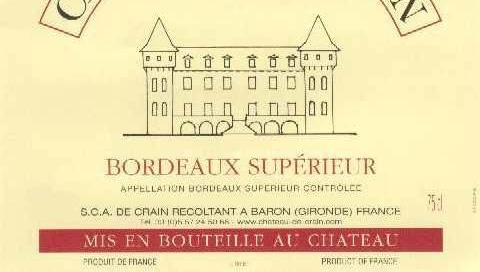Bordeaux Supérieur is an appellation that spans the entire Bordeaux region, offering a step up in quality from basic Bordeaux AOC wines. Known for its focus on red wines, Bordeaux Supérieur requires stricter vineyard and production standards, resulting in wines with greater depth, concentration, and aging potential. This appellation is a go-to for wine enthusiasts seeking approachable yet structured wines that showcase the essence of Bordeaux at an affordable price point.
Primary Grape Varieties
Merlot - Typically the dominant grape, offering ripe fruit flavors and a plush texture.
Cabernet Sauvignon - Adds structure, tannins, and dark fruit notes.
Cabernet Franc - Contributes freshness and herbal complexity.
Petit Verdot - Occasionally used for additional spice and color.
What Makes Bordeaux Supérieur Special
Higher Standards
Compared to Bordeaux AOC, Bordeaux Supérieur requires lower yields, higher minimum alcohol levels, and a longer maturation period. These stricter requirements result in wines with more concentration and complexity.
Approachable Style with Aging Potential
While many Bordeaux Supérieur wines are crafted for early enjoyment, they also have the structure to age for several years, making them versatile for various occasions.
Excellent Value
Bordeaux Supérieur bridges the gap between everyday Bordeaux and more prestigious appellations, delivering high-quality wines at accessible prices.
Tasting Notes for Blind Tasting
Expect flavors of black cherry, plum, and red currant, with hints of cedar, spice, and earth. Bordeaux Supérieur wines are medium-bodied with smooth tannins and a balanced, fruit-forward finish.
Quiz Time
How do the stricter production standards of Bordeaux Supérieur influence the quality of the wines?
What makes Bordeaux Supérieur an appealing choice for wine lovers seeking value?
Premium Subscriber Content: Understanding Bordeaux Supérieur’s Appeal
Terroir Insights
Since Bordeaux Supérieur wines can be produced across the Bordeaux region, their styles and characteristics vary widely depending on the terroir. Clay-limestone soils often bring richness and minerality to Merlot-based wines, while gravel soils enhance the structure and freshness of blends that include Cabernet Sauvignon. This diversity in terroir allows producers to create wines with unique expressions while adhering to the higher standards of the appellation.
Keep reading with a 7-day free trial
Subscribe to Daily Terroir: Exploring Wine Regions One Day at a Time to keep reading this post and get 7 days of free access to the full post archives.






